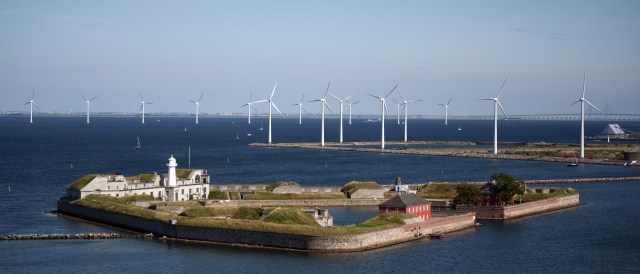At the end of September, the heads of states met in New York for a climate summit to pledge action on climate change. While renewables were not at the center of attention, Anna Leidreiter argues that future commitments need to contain a pledge to transition to 100% renewable energy by 2050. A growing number of cities, regions and even countries around the world have already proven that such a path is realistic.

Denmark was the first major economy announcing it was going 100% renewable – an example other countries need to follow. (Photo by CGP Grey, CC BY 2.0)
Climate Change is back on the political agenda. On the 23rd of September, Heads of States met in New York to pledge climate action. This is good news as it is about time. The rising economic, health-related, and environmental costs of burning fossil fuels, combined with the accelerating impacts of climate change repeatedly emphasize the urgency for transitioning to 100% Renewable Energy (RE). Those ready to lead the fossil fuel and nuclear phase-out and a 100 % renewable energy transition must speak up in New York and inspire the world.
From North America, to Europe, Africa, Asia and Oceania: Local, regional and national governments demonstrate that 100% RE is technically possible, economically advisable, socially imperative and environmentally inevitable. They also highlight that the decision to phase out fossil fuels is solely dependent on political will.
100% RE is already reality today…
In Germany, a network of 100% RE regions includes 74 regions and municipalities that have already reached 100% renewable energy targets. One of them is Rhein-Hunsrück District. As of early 2012, the District of Rhein-Hunsrück with about 100.000 inhabitants officially began producing more than 100% of its electricity needs, crossing an important milestone on the way to creating a truly 100% renewable energy system. In early 2014, it is estimated that Rhein-Hunsrück already produced over 230% of its total electricity needs, exporting the surplus to the regional and national grid, or re-directing it into local transportation, hydrogen or methane production. Through improvements in energy efficiency and the extension of renewable energy, the district has converted energy import costs into regional jobs and added value. Within 15 years, Rhein-Hunsrück District`s CO2 emissions were reduced by 9.500 tons, the cost savings amount to € 2 million.
Perpignan Méditerranée in France is another example. The region in the nuclear dominated country is intending to become a true role model in the energy transition, aiming to be the first urban territory in Europe to meet all its electricity needs by means of local projects. 75% of the region’s electricity needs are already met by renewable energy. The approach is to reinvigorate the local economy, agriculture and tourism in a certain inland part of the region called Catalonian Ecopark: a space where new synergies are created between the region’s economic and agricultural activities, its respect for the environment and landscape and its position as a tourist destination and quality of life.
Such case studies are not only a reality in Europe. The city of Greensburg, Kansas, US powers all local homes and businesses with 100% renewable energy, 100% of the time. The story of Greensburg is a story that has gone from tragedy to triumph: A tornado destroyed or damaged 95% of the town’s homes and businesses on May 4, 2007. The community – with a strong leader in Mayor Bob Dixon – turned disaster into an opportunity and created a vision to rebuild Greensburg as a sustainable community. Building efficiency combined with local wind power and complemented by small solar installations and biogas, are the cornerstones of their master plan. The town has gathered a diverse group of experts to turn their vision into a reality.
However, it is not just cities and towns that have set ambitious targets: Globally, there are several countries that are moving towards or have already achieved 100% RE. Denmark, for example, is the first OECD country that has committed to achieving 100% renewable energy in electricity and heat by 2030 and to be totally fossil-free by 2050 including the transport sector. Further, Scotland as well as island states like the Cape Verde and Tuvalu are demonstrating the feasibility of a fully renewable energy supply.
…and must speed up now
While being an inspiration, the move towards 100% Renewable Energy is still taking place in scattered communities and regions around the globe. The measures that governments have taken up are nowhere near proportional to the urgency to act, taking into consideration today`s like climate change crisis the loss of biodiversity, resource scarcity and poverty.
At the Climate Summit in New York, the task given by UN Secretary General Ban Ki-Moon was simple: Heads of States had to promise the timely delivery of a global action plan by 2015 – a shared and agreed strategy for rapidly growing the scope and scale of the ongoing transition, so that a safe climate with all its benefits for people and planet is possible. This needs to target a fully decarbonized energy sector based on 100% Renewable Energy by 2050. Check out how you can get involved and engage in the discussions on www.Facebook.com/Global100RE and www.Twitter.com/Global100RE. Our planet needs your voice!
This article by Anna Leidreiter is reposted with permission and was first published at World Future Council.
I am feeling positive about our ability to switch to clean energy production and use but the effort must start now and increase exponentially.